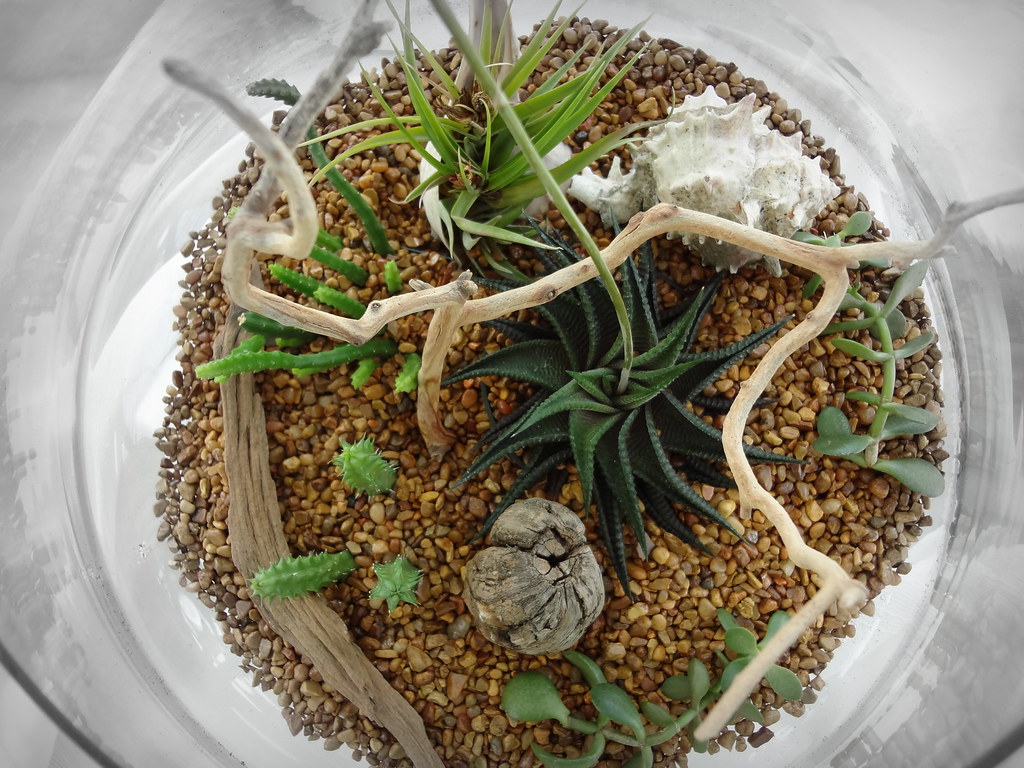
Home Terrariums: Creating Miniature Forests, Deserts and Swamps (Part 2)
Wouldn’t it feel nice and refreshing to bring the inspiring wonders of nature to your home by setting up a stretch of desert, swamp or forest, along with the appropriate forms of animal life?
Well, how about creating your own little desert in your den?
The First Step

The first step to making a desert terrarium consists of choosing the right container for your miniature desert.
Remember this from the first article:
“The best container for any type of terrarium is a glass aquarium. First lay down a foundation about an inch thick, of pebbles, glass marbles or flowerpot fragments on the bottom of the terrarium. This foundation will provide drainage. If you wish to build up a mountain at one end of the terrarium, you should have a somewhat deeper foundation. The foundation of rocks and pebbles not only ensures proper drainage, but it will enable you to see whether you are giving too much or too little water. You will also be able to observe the growth of roots and the inevitable appearance of green algae.”
How to Prepare a Miniature Desert?

For a desert terrarium, spread a thin layer of soil over the foundation and then several inches of clean white sand over the soil. If you prefer, you can use brown sand or yellow brick broken into very small pieces. Your imagination and your pocketbook can be your guides as to what desert vegetation to use. Most kinds of cactus will thrive in your terrarium. So will many succulent plants – two of the best of these are the aloe and the plant called crassula.
The aloe grows more luxuriantly than any other desert plant in a glass garden. Give it time along with a moderate amount of light and you’ll see how it will send up a straight stem with long, gracefully curved, fleshy leaves and bearing a row of “teeth” on each side. At the same time, numerous small plants sprout from the base of the old one, producing a luxuriant thicket. If you want your desert plants to grow rapidly, you can prepare a somewhat thicker layer of enriched soil or make pockets of enriched soil here and there. It is important to have plenty of light, particularly if you want your small cacti to flower.
Most American deserts have a brief rainy season in which they have become fantastic flower gardens. If you are able to obtain seeds of some of the desert “belly plants” – they are called as such because you have to lie on your stomach to observe them – you can try growing them or you can plant seeds or cuttings of small flowering weeds or garden plants. These will be more interesting if you confine them to one area of the desert. Part of the sand or brick should be left unplanted for the sake of contrast.
The best animals for your miniature desert will be horned lizards (also called horned toads though they are not toads), collared lizards and desert swifts. You can feed these reptiles living insects such as mealworms (the larvae of certain beetles), adult beetles, flies and fly larvae (maggots), cockroaches, crickets and grasshoppers. Horned lizards will also eat ants. Collared lizards relish on an occasional dandelion or clover blossom and they will prey on smaller swifts and young horned lizards. You must provide water for your lizards. Some will drink from a dish while others will ignore water in a dish but will drink drops of water that have been sprayed on the plants.
A rock or two or a branch will give the collared lizards and swifts a place to climb. Your desert reptiles must have several hours of daily sunlight and a dry, warm temperature of at least 80 °F. You can ensure a necessary free circulation of air by putting no cover on the terrarium or by making a cover of screening. If you have no animals in your dessert terrarium, a glass cover will definitely make it more beautiful.
Now, if you want to create a miniature swamp, you can follow the third part of this article series for more information.
